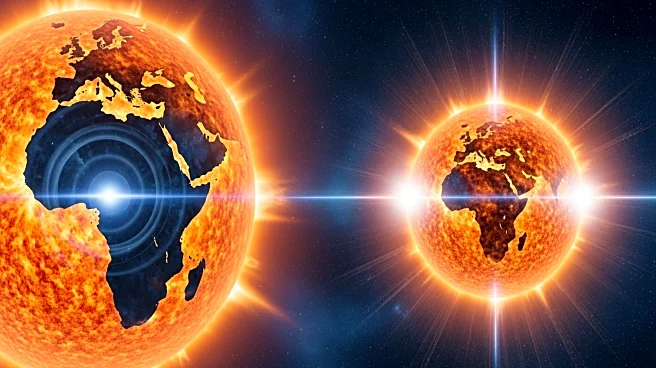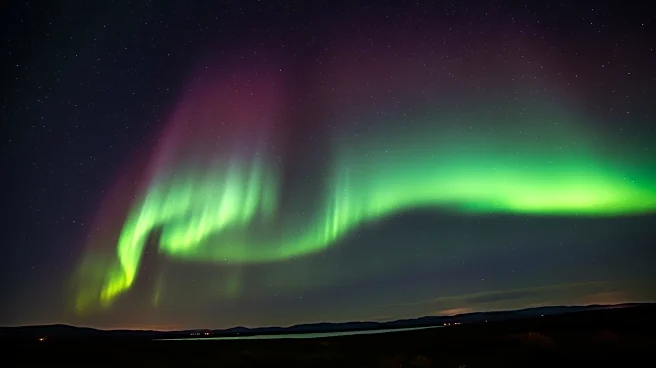What's Happening?
The sun has unleashed a powerful X5.1-class solar flare, marking the strongest solar eruption of 2025. This flare originated from sunspot AR4274, which has been highly active recently. The eruption peaked
at 5 a.m. EST, causing significant radio blackouts across Africa and Europe due to the ionization of the upper atmosphere. This solar flare is part of a series of intense eruptions from AR4274, which also included X1.7 and X1.2 flares earlier in the week. These events have been accompanied by coronal mass ejections (CMEs) that are expected to impact Earth, potentially triggering geomagnetic storms and auroras.
Why It's Important?
The solar flare's impact on radio communications highlights the vulnerability of technological systems to space weather events. Disruptions in high-frequency radio communications can affect aviation, maritime operations, and emergency services, emphasizing the need for robust infrastructure to mitigate such risks. The potential geomagnetic storms could also affect power grids and satellite operations, posing challenges for industries reliant on these technologies. Understanding and predicting solar activity is crucial for preparing and protecting critical systems from adverse effects.
What's Next?
The coronal mass ejection associated with the solar flare is expected to reach Earth around midday on November 12. NOAA forecasts that this could lead to severe geomagnetic storm conditions, which may result in widespread auroras and further disruptions to communication systems. Stakeholders in affected industries will need to monitor the situation closely and implement contingency plans to minimize the impact on operations. Continued observation and research into solar activity will be essential for improving predictive models and response strategies.
Beyond the Headlines
The recent solar activity underscores the importance of international collaboration in space weather monitoring and response. As solar flares and geomagnetic storms can have global consequences, sharing data and resources among countries can enhance preparedness and resilience. Additionally, the event highlights the need for public awareness and education on space weather phenomena, as understanding these events can help communities better prepare for potential disruptions.













